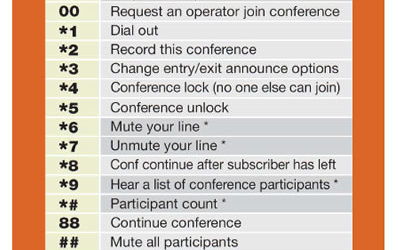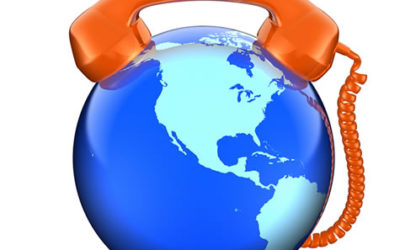Google or Bing “collaboration tools” and you’ll get various results, especially if you start to distinguish between free- and fee-based. Here’s what a recent Google search revealed:
- free collaboration tools: 36.9 million results
- fee-based collaboration tools: 3.5 million results
Clearly, there is strong interest in free and Freemium type collaboration tools. Just think of how many free apps or web-based tools you use compared with those you pay money for. I bet it’s a lot.

And certainly, there’s nothing wrong with free tools, as long as they work, provide value and keep on working. Right? But if your collaboration is mission-critical, you might want to think twice about getting by with free, or cheap tools.
The problem with free collaboration tools, of course, is they often lack support, have quality issues, limitations, or simply go away.
Speaking of quality issues, I heard recently about a much anticipated webinar by an author of a very popular new business book. It used a free-based conferencing system that included voice, chat and video. Problem was nobody could hear the audio. They could see the author’s lips move, but no sound. When sound finally came on it was out of sync, warbled and cut in and out.
It prompted someone to enter, “Try Adobe Connect next time” in the chat window. (Adobe Connect offers multiple purchase options, and is also available through Adigo, along with many other industry-leading tools.) What’s the adage? “You get what you pay for.” And for this emerging thought-leader, his credibility factor took a bit of a hit.
Another problem with “Free” is that you might find a tool you really like and one day, without any warning, it simply vanishes. Has that ever happened to you?
That was the case for several of the 15 top, free collaboration tools listed in an article I recently came across. Out of 56,000,000 search results on bing for “collaboration tools” this one was at the very top of the organic (non-paid) search results:

The first clue many of these “Free” tools no longer existed (or replaced by others) was the date of the article: Oct. 31, 2008. The second was the “Six Revisions” annotation to the title. But what I wasn’t expecting to find was the first 4 out of 5 tools listed in this blog either no longer existed (404 Web Page Not Found), or had morphed into something else, completely unrelated! I stopped clicking after that.
2 Factors to consider when choosing free- or fee-based collaboration tools
When deciding whether to select a free tool or one you’ll invest in, and want to personalize for your purposes, consider these key factors:
1. How Mission-Critical is your intended use of the tool?
Not to be overly promotional of Adobe Connect, but the mission-critical aspect is something they stick its value proposition squarely on when they say: “Adobe Connect powers mission-critical web conferencing solutions end-to-end, on virtually any device.”
If end-to-end, reliable collaboration is essential to your mission, you’ll want to consider a professional-grade tool you’ll shell out some bucks for. Otherwise, don’t complain when the sparks fly, stuff sputters and worse, it simply stops working.
Also, be aware of what low-grade collaboration tools can cost you in terms of how others (potential customers) may perceive you and your organization.
2. What’s the productivity cost of using generic or free-based collaboration tools?
There are a lot of one-size-fits-all collaboration tools out there. Many are free while some are marketed to appeal to the masses with “unlimited” and “affordable” messaging. And herein lays the problem: technology offered for mass appeal is engineered at the lowest cost possible, and not on a quality-based or personalized basis.
At the very least, consider how much it costs:
- To have ever-changing pin codes or long conference IDs participants can’t find, remember, or enter without error
- To have slow, unresponsive or nonexistent customer service
- To have conferences start late because you’re waiting for everyone to join
- To have limited options for people to join a conference call
- To have problems where only 1 talker is heard at a time and the discussion is halted by talk-over or walkie-talkie like speech instead of a free-flowing conversation – what does that do to collaboration?
As we endeavored to point out in our ebook, The Hidden Costs of Generic Conferencing: Using one-size-fits-all conferencing services costs your company more than you can afford to pay. There’s a good chance your company is losing money to low quality audio, slow conference entry, longer-than-necessary-calls, time-consuming customer service, limited functionality, or sub-par International conferencing calling.
Find out (for FREE!) how low-quality conferencing can be costing you thousands per year by getting this guide.
Does this sound familiar?
Recently, we polled a group of professionals who rely on collaboration tools with this question: What’s the biggest challenge you face in running or participating in business meetings and conference calls? The responses:
- Technology not working
- Attendees arriving late
- Background noise
- Quality of sound
- Buzzing or echoing
- Having to call back-in
- People talking over other people
The good news is it doesn’t have to be this way.
All these issues, and more, will be addressed by a quality-based provider who cares about your mission-critical collaboration. It won’t be free, and it may not be the cheapest, but it will be well worth your investment.
And trust me; your fellow collaborators will thank you for it!





0 Comments